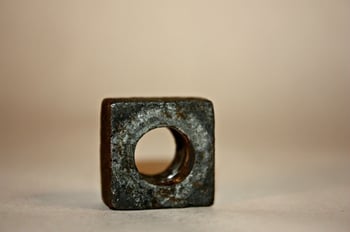 Coatings can be an excellent way to extend the useful life and utility of a parts washing or materials handling basket in your production processes. However, as useful as coatings for baskets can be, they’re not always perfect.
Coatings can be an excellent way to extend the useful life and utility of a parts washing or materials handling basket in your production processes. However, as useful as coatings for baskets can be, they’re not always perfect.
A little while back, a client reached out to Marlin Steel about a set of old powder-coated steel stands that they had. All of their coated steel stands had become rusted, and the powder coating along the tops had started to peel—regardless of whether the stands were used in the office or in the warehouse.
The client’s main concern was finding out why their coatings were failing so they could fix the problem.
The problem was that without being able to inspect the part in question, it would be nearly impossible to say what the exact cause of the problem is with any certainty. The best we can do is point out that there are a number of reasons why a part might rust and peel after getting a powder coating, including:
Environmental Factors
Powder coatings can be incredibly resilient, but even the best coatings can take only so much. Exposure to the wrong chemicals, temperatures, and mechanical stress factors can damage a powder coating or wear it away.
For example, a niloxy-based powder coating can quickly be damaged by exposure to methanol or to oven-like temperatures.
These environmental stress factors can strip away the protective powder coat, leaving the underlying material exposed.
Misapplication of the Coating
In some cases, the right coating may be in use, but the part may still crack, peel, and rust.
This is often because when the coating was initially applied, important steps were skipped in prepping the basket for the coating process. Misapplication of coatings and failure to properly prepare parts are the most common cause of rusting in powder coat parts.
For example, a part may already have been oxidizing prior to being put through the coating process and not been properly treated to remove the oxidation first. Because the rust is already present under the surface of the coating, the coated part will continue to slowly oxidize.
After a while, the rust will come out if it’s already under the powder.
Given that all of the client’s steel stands experienced this problem at around the same time whether they were deployed to the warehouse or to the office, this seems to be the most likely explanation for their rusting problem.
Wear and Tear from Repeated Use
No coating is completely impervious to outside force. Eventually, even the toughest powder coatings will wear thin and start failing to protect what they’re coating—even if you’re using the right chemicals, moderate temperatures, and are being exceedingly gentle.
This is why you may need to periodically reapply your powder coatings.
However, when reapplying a coating to a parts washing basket or anything else, it’s important to make sure the part is properly prepared first. The old layer of coating may need to be stripped and the surface of the basket refinished to remove any particulates before applying the new coating. Otherwise, you risk running into rusting/peeling problems.
To avoid coating failures, it’s important to pick the right coating for your application, ensure the coating is applied correctly, and factor in the total useful life of the coating itself so you know when to replace it.
Need help picking the perfect coating for your parts washing/material handling baskets? Marlin Steel’s engineering team has the training and experience to help!



.gif)


